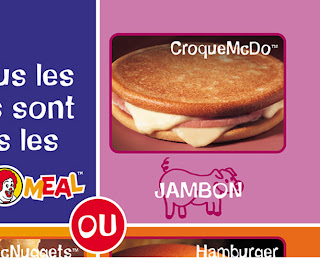 |
Discussing the rise of a wine-tasting culture, and, consequently, wine-tasting language in class last week got me thinking about the rise of another sort of enthusiast over the past few decades: the coffee enthusiast. With the popularization of Starbucks and other coffee-drink offshoots (now even Burger King sells an iced mocha), Americans have begun to take interest in coffee the same way that baby boomers took an interest in wine tasting in the ‘60s. It is hard to believe now, with a Starbucks on nearly every street corner, that the chain was once a single coffee shop in Seattle that boasted, according to the Starbucks website, “some of the world’s finest fresh-roasted whole bean coffees.”
The elaborate descriptions that the Starbucks website gives for each of its brews offer ample data for a lexical analysis of words relating to coffee’s taste. Just as Adrienne Lehrer observed in her article “Wine and Conversation: A New Look” that the term “texture,” while rarely used to describe food twenty years ago, has now become common in describing wines, especially when used in conjunction with words describing the human body. By reading Starbucks’ descriptions of its coffees, we can see that this use of “texture” has extended into the realm of coffee: the cappuccino is described as having a “luxurious” texture–or, borrowing a word from wine enthusiasts, “mouthfeel”–while other roasts are described as “smooth,” “medium-bodied,” “dense,” “lush” or “rich” (it seems that the emphasis on hedonism that pervades wine-speak has influenced coffee-speak, as well).
 |
| http://www.starbucks.com/menu/drinks/brewed-coffee/bold-pick-of-the-day?foodZone=9999 |
Taste-related descriptors abound on the Starbucks website, as well: you can read about the “clean, nutty taste of a good Colombia,” the “citrusy snap of a Kenya,” and the “herbal mellowness of a Sumatra.” Other coffees are described as having “citrus flavors,” “caramel notes,” and tasting of “soft cocoa” or “lightly toasted nuts.” The taste words can be generally placed into two groups: food-related (nutty, citrusy, caramelly, sweet) and non-food-related (sparkling, clean, mild, mellow, subtle, soft, stout, sturdy, full-bodied). The coffees are personified, just as wines are: the Veranda blend, for example, has a “calm and laid-back character,” and is considered a “Blonde roast.” Many of these descriptors can be organized into a scale, as Lehrer does with wine adjectives:
Citrusy --> Nutty
Soft Sturdy
Mild, mellow Bold
Clean --> Smoky
The purpose of all this flowery language is, just as Lehrer points out in her article, to foster a sense of community as well as to enhance one’s sensory experience. The key word at Starbucks is “experience”: drinking coffee is supposed to be a sense-enhancing moment (the coffee is described as “high-definition,” at one point) in which a “whole new world unfolds on your palate.” And, judging from the lines that extend past Starbucks’ doors, we’re buying into it.





